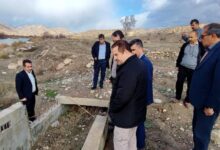Razif Khoani is the most beautiful heritage attraction of the world island of Qeshm
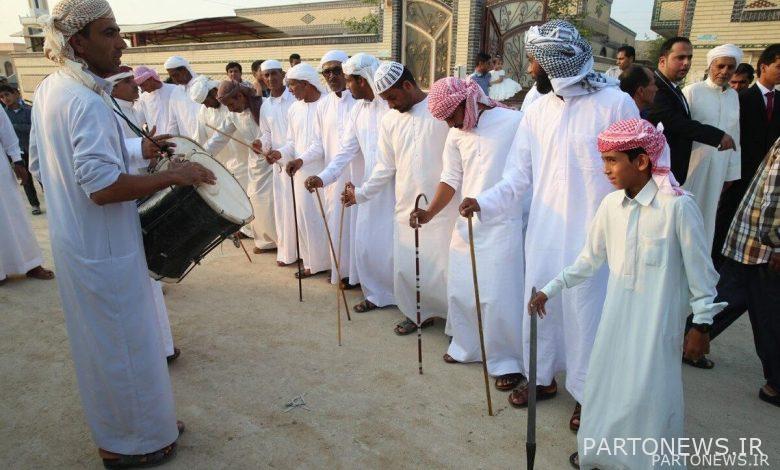
Razif Khoani, the most beautiful heritage attraction of the world island of Qeshm, in the distant past, was the celebration of the return of sailors, who after days of work and effort at sea and being away from their families, performed it to announce their arrival to the safe shore, to the families and residents of the harbor. delivered
The Iranians’ deep look at the Pars Sea has changed this natural fragment into one of the thought arenas in South Asian civilizations. What is clear is the long-standing connection of Iranians in this Persian Sea and their impressive presence with commercial and cultural activities with the Far East and the shores of Africa.
At the same time, paying attention to the cultural connection in the area of this long-lasting sea requires a special cultural program. As we have seen, partiality and tendency towards a cultural pattern that is inconsistent with the local culture of the border dwellers will lead to abnormalities of vision.
Paying attention to local patterns in Qeshm Island’s cultural management plans will increase the sense of self-confidence, xenophobia, and subsequently civil and economic progress and development.
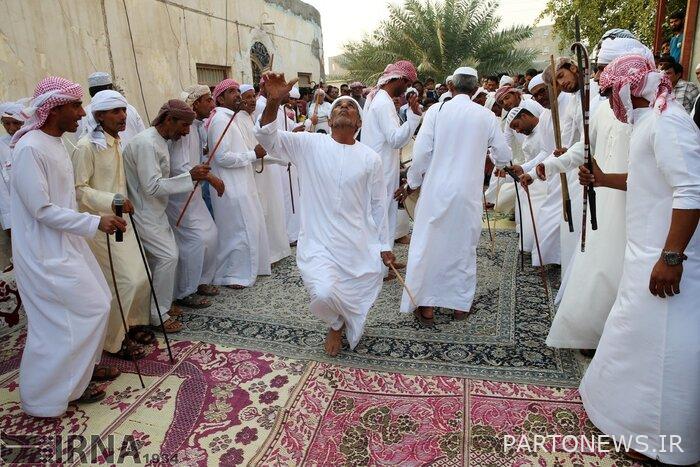
Documenting and representing native dynamic rituals and intangible heritage in general, and most importantly, bringing them into daily life, is one of the goals of this article. It is clear that the propaganda view of the society with the deep cultural background of Qeshm Island will gradually lead to their disillusionment.
This damage and cultural challenge, especially in the intact communities of the island’s villages, will prepare a suitable platform for the rise of deceitful xenophobia of the countries on the other side of the Persian Sea. Using the power of the local community of Qeshm Island in holding rituals makes the resident communities consider themselves the guardians of this cultural heritage.
The Razif ceremony is one of the ancient rituals of the people of Qeshm Island and Hormozgan Province, whose parts are in the form of stories and narratives of the sea, sea music and the music of collecting fishing products.

This music describes the events and events of the sea voyage for sailors, which starts from the time of pulling the anchor and sails and continues until the return to the origin.
The sailors performed this music in the form of work music, which itself includes several parts, and for example, during a part of the journey, they sang the zikr of Hazrat Rasool (PBUH) to protect themselves from storms and rain.
This music dates back to about a thousand years ago when the residents of Bandar Kong and Bandar Marwarid (currently Bandarlange or Gogana) of Hormuz Island and Qeshm Island traded cloth and spices by sea.
Reciting Razif is a type of travelogue reading that depicts the journey of seafarers like a poem and does not ignore the remembrance of Prophet Khatami Marbat, the Prophet of Islam (PBUH), Ahl al-Bayt (PBUH) and blessings on this pure family.
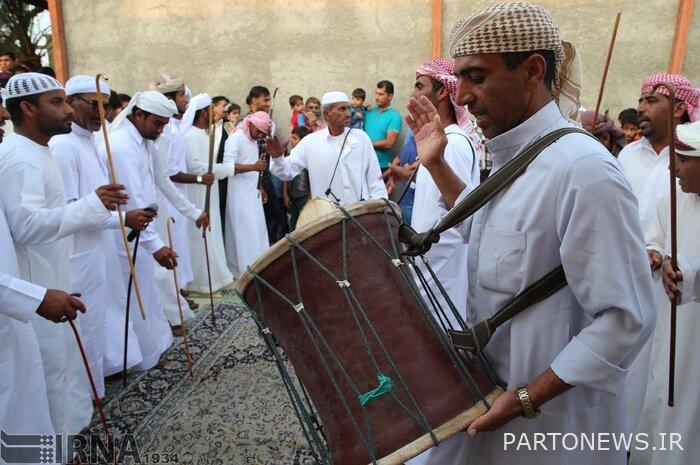
Remembering and preserving the musical legacy of our fathers and what happened to them, the suffering and hardships they endured to earn a piece of bread, is a duty on our shoulders to pass it on to future generations.
In Qeshm Island, in order to preserve and survive this ritual which is about to be forgotten, it is displayed with a combination of rattan dance in wedding celebrations or native and local festivals, to show the essence and human function of creating unity and solidarity. do not forget
In the celebration of this native, local and historical ritual in the field or open space, 2 groups, the number of each of which varies between eight and 20 people, face each other. Each person has a bamboo in his hand that he uses to perform.
In the performance of this ceremony, each member of the group in each row wraps his left hand around the waist of the next person and performs certain movements and forms with the bamboo in his right hand.
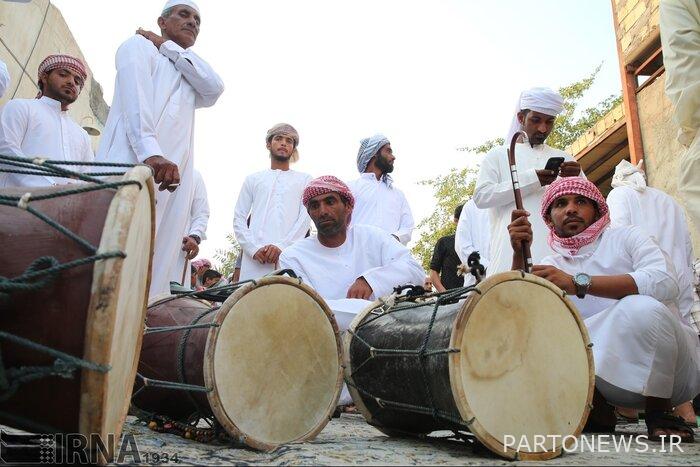
The musicians of this group, who are in charge of the main work, are placed in the middle of the field and 2 groups are located on 2 sides of these musicians. The musicians include three dhol players, two circle players and one or two hose players.
With each member in place and the tuners, the musicians begin to play and the singer or “ninth” who is more experienced (in the past this role was left to older and experienced captains) begins to sing. he does.
The lyrics are mostly Arabic and sometimes Swahili is also heard in it. The reading is done in such a way that out of 2 Nahims, one person sings and the other says the continuation of that verse with a heavier tone, the difference in the tone of the 2 Nahims’ voices gives a certain order and rhythm to the music.
Razif is a part of rituals and sounds of work. After the passing of years and the conversion of wind turbines into motorized barges, as well as the absence of the need for tasks such as raising the sail or pulling the anchor with those special customs, or fishing and gathering fishing nets as a group, this ceremony has faded over time. .
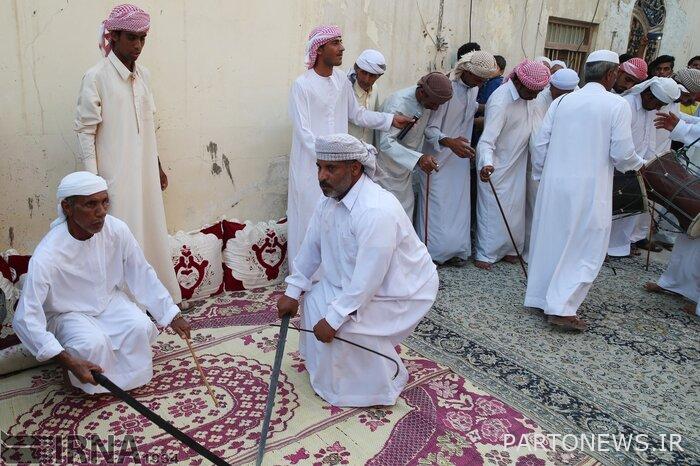
Therefore, in order not to lose these customs and traditions, it was displayed with a combination of rattan dance in wedding ceremonies to remember and preserve the musical heritage of the fathers and what happened to them and the suffering and hardships that they had to go through. To pass on to the future generations what they have endured to get a bite of bread.
In the past, Razif was a sword dance, which is now a rattan dance, held for the purpose of unity and solidarity, and at the same time, it is considered to be mostly epic music. Reading those poems was to encourage people to defend and fight for the soil of the land.
Razif’s name is based on the placement of people in 2 rows. This ceremony in Qeshm Island is known as Aswa or Aswa. It seems that this name was taken from Khaizran, as a cane, which over time became Aswa.
As it was shown in the introduction of Ayin Ayin, life by the sea and seafaring, in fact, has been a meeting point of various ideas throughout history. Sometimes it reaches the coast through the sea or, on the contrary, it is transported from the city and the coast to distant places.
These cultural exchanges between India, Africa and the Arab countries of the Persian Gulf have led to a kind of cultural integration that cannot be properly attributed to each of them as an independent identity. However, this cultural integration, in addition to similarities, also has differences that show the independent native identity of that region.
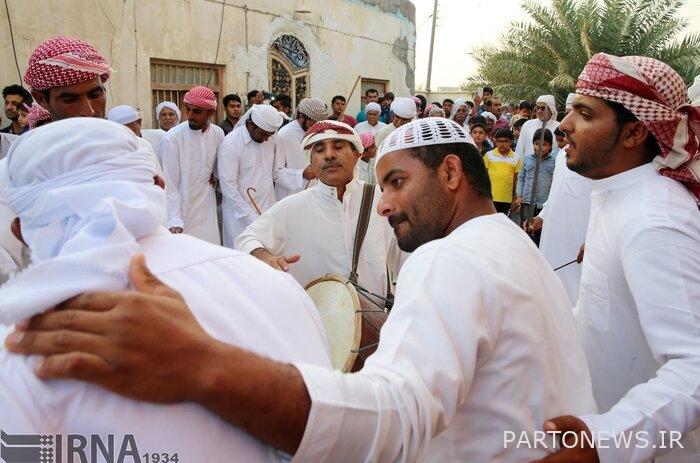
Cultures are constantly appropriating another culture, meaning taking and changing. This cultural discourse has always existed. This gradual intercultural fusion causes cultural richness. It leaves the stationary state and changes itself continuously. while continuously maintaining their independent identity.
People who are interested in folklore music and indigenous, local and historical rituals by traveling to Qeshm Island and visiting the entry points of the island, recreational and tourism piers and eco-tourism residences, can witness this special performance by the old sailors side by side with the youth of the island. who are proud of their history.
The Persian Gulf, with an area of nearly 237,473 square kilometers, is located between 24 and 30 degrees and 30 minutes north latitude and 48 and 56 degrees and 25 minutes east longitude from the Greenwich Meridian, and the beautiful island of Qeshm is like a gem on the expanse of blue waters. It shines.
This island with an area of 1,500 square kilometers from the Strait of Hormuz, parallel to the south coast of Iran, with a length of 135 kilometers and an average width of 11 kilometers, is a part of Hormozgan and has a coastline of 300 kilometers.
Qeshm city includes Qeshm, Hengam and Lark islands with about 150,000 people, spread out from the Strait of Hormoz parallel to the coast of Hormozgan province, with a length of 150 km and an average width of 11 km, in the waters of the Persian Gulf.

